Best Wheel Bearing Greases: Just Keep Rollin'

Top 8 Best Wheel Bearing Greases
We’re confident a good many of you saw this viral video in which a tire and wheel assembly seemed to warp in from another dimension to clobber someone’s front porch at speed. Pick your favorite part of the video (there’s plenty) – the assembly itself tearing down a rural highway at a tremendous clip, the fact it actually rang the doorbell after impacting the home, or the guy in orange shorts who shows up after the destruction and stands there in complete befuddlement.
It’s likely we’ll never get a complete answer as to what exactly happened – but here’s one good theory: a seized bearing caused metal fatigue which led to the separation of wheel assembly and trailer. This is plausible, given the remains of Mr. Runaway Tire include a severely smoldering hub area.
Either that, or it’s the evaporation effect after the wheel assembly crossed into our universe.
Table of Contents
-
Editor's Choice: Valvoline Full Synthetic Grease: Shop Now
-
Lucas Oil X-Tra Heavy Duty Grease: Shop Now
-
Lucas Oil Red 'N' Tacky Grease: Shop Now
-
Mag 1 High-Temp Wheel Bearing Grease: Shop Now
-
Mobil 1 Synthetic Grease: Shop Now
-
Timken Premium Red Wheel Bearing Grease: Shop Now
-
Sta-Lube New Generation Wheel Bearing Grease: Shop Now
-
Plews & Edelmann LubriMatic Marine Trailer Wheel Bearing Grease: Shop Now
1. Editor's Choice: Valvoline Full Synthetic Grease
Valvoline sells a wide variety of greases, as one would expect of a company that plies its trade in oil lubricants. They are offered in a range of tub sizes, ranging from 14 oz cartridges to 35-pound buckets. Dude with the missing trailer wheel needed the latter.
This option is a full synthetic, an interesting option to bearing grease that generally smells like the bottom of a particularly foul tar pit. Valvoline says this stuff is fortified with extreme pressure additives for exceptional load-carrying capability. It also apparently helps inhibit rust and oxidation.
Pros
- Well-known brand, thousands of positive reviews
Cons
- Paradox of choice
Bottom Line
- Try the synthetic line and save yer nostrils
2. Lucas Oil X-Tra Heavy Duty Grease
Your author used to abhor product names that intentionally misspell commonly used words, until he found himself in a 'drive-thru' looking through a windshield treated with 'x-pel' coating. At that point, I figured it was a losing battle and decided to embrace the chaos.
If one accepts stories about old Jags and other British cars at face value, then it might be concluded that Lucas Oil is a lot better than Lucas Electrics. This particular product apparently lasts four times longer than regular grease, begging the question why they sell the regular stuff in the first place. It should be noted that most Lucas Electrics didn't last four time longer than anything.
Pros
- Virtually waterproof
Cons
- Only one choice of tub size
Bottom Line
- Great choice for high speed bearings
3. Lucas Oil Red 'N' Tacky Grease
We'll stick with Lucas Oil for a minute since their range of products in this area is so vast it could surely consume its own section at an auto-parts store. This is a smaller tube of product instead of a larger tub and is promoted simply by its color.
Doing literally what it says on the can - being red and tacky - this grease is advertised to be a technical blend (better than a theoretical blend, I guess?) of lithium and polymers plus a heavy dose of anti-wear and anti-seize agents. These are not the same as secret agents, by the way.
Pros
- Multipurpose application, it's red
Cons
- Small 14oz tube
Bottom Line
- Especially good for sliding surfaces (mind out of gutter, folks)
4. Mag 1 High-Temp Wheel Bearing Grease
That's 'Mag 1' in the title, not 'Magi'. Those are the dudes who show up at Christmas concerts with frankincense and myrrh, played by the only kids in class who own dressing gowns. This is a wheel bearing grease advertised to have anti-wear and extreme pressure additives.
Sold in a one-pound tub, real-world reviewers say it's good not just for wheel bearing jobs but also for any high-temp applications with moving parts. Fun fact: this apparently includes firearms, with several customers recommending it for that use. Murica!
Pros
- Low price, high praise
Cons
- What's that brand name again?
Bottom Line
- It apparently provides 'good pumpability' (mind, gutter, etc)
5. Mobil 1 Synthetic Grease
In the same vein as Valvoline, Mobil 1 ought to have approximately eleventy billion permutations of wheel bearing grease given the field in which they play. This is true, so we're again selecting a synthetic product for similar reasons mentioned earlier.
Mobil 1 says this stuff withstands the effects of water washout from heavy rainstorms or other high water wash events. As an avid off-roader, this is the type of ad copy that causes me to sit up and pay attention ... even if most other products on this list do exactly the same thing
Pros
- Good for heavy loads and in occasional water
Cons
- Odd (single) story of specific failure in reviews
Bottom Line
- Country of origin - United States
6. Timken Premium Red Wheel Bearing Grease
Despite not appearing on my radar in any way, shape, or form prior to the research of this post, Timken is apparently a well-loved brand collecting a solid 4.7 out of 5-star rating. It's available in two sizes: 14 oz and 16 oz.
This Timken brand of wheel bearing grease is a premium, hi-temp, red grease and is specifically formulated to handle the demands of both disc and drum bearing applications. In other words, go ahead and use it on your trailer like the guy in the video at the top of this story should have done.
Pros
- Very positive reviews, mentions of a warranty
Cons
- Only small tub sizes
Bottom Line
- Learn something new each day
7. Sta-Lube New Generation Wheel Bearing Grease
'New Generation' is not the same as 'Next Generation', so don't go getting any ideas that this stuff has been tested in the Jefferies Tubes of the Enterprise-D by Chief Engineer Geordi La Forge. They could probably have used some of this stuff against the Borg.
Captain Picard would probably appreciate Sta-Lube being available from a bunch of sellers on Amazon, meaning he needn't be bound to spending Starfleet latinum with that devious Ferengi trader. Prime shipping is not available in the Romulan Neutral Zone.
Pros
- 4.9 out of 5 stars
Cons
- Only 20 reviews
Bottom Line
- Make it so!
8. Plews & Edelmann LubriMatic Marine Trailer Wheel Bearing Grease
Chuckle if you will at the inclusion of a marine product on a list showing up at The Truth About Cars, but your author can say with absolute certainty that some products intended for marine environments are totally over-engineered and therefore make for great products on land.
Case in point? The marine battery I deployed on a tired old Ford Escort that had starting problems. After its installation, one only had to look at the ignition key and that 1.9L lump would fire to life. As for this product, its special calcium sulfonate complex, a water-insoluble formula, provides excellent corrosion protection under severe conditions.
Pros
- Multiple uses, marine-grade
Cons
- You'll probably want two tubs of it
Bottom Line
- The briny sea provides once more
What grease should I use for my wheel bearings?
While several types of greases are available, when looking for automotive wheel bearings, a specific category and grade must be checked to make sure that everything in your car works well, and stays that way for a long time. An organization named National Lubricating Grease Institute, generally referred to as NLGI, rates the greases according to their ingredients and physical and chemical properties.
When you check the greases, you will see something like NLGI GA-LA, NLGI GB-LB, NGLI GC-LA, or something similar and a number printed on the label. You can continue reading to understand what these letters and numbers mean.
In all types of wheel bearing greases, NLGI remains common as it is the institution that rates the lubricant which further helps the engineers and workmen to pick the most suitable one according to the usage.
As for the other letters and numbers, the details are given below:
G – This letter tells that NLGI certifies that the grease is suitable for automotive wheel bearings. The letters A, B, or C that G follows represent the quality where:
A is good
B is better
C is best
L – This letter tells that NLGI certifies that the grease is suitable for applying on automotive chassis. The letters A or B that L follows represent the quality where:
B is best
Numbers 0000 to 6 represent the thickness of the grease where 0000 is in an almost liquid form and 6 is as thick as a cheese layer. In automotive, NLGI No. 2 category grease is used which is more or less as thick as peanut butter, and offers optimum lubrication to the wheel bearings
With that said, while looking for wheel bearing grease types, you’ll see something like:
NLGI No. 2
and
NLGI GA-LA, NLGI GB-LA, NLGI GC-LA, NLGI GA-LB, NLGI GB-LB, or NLGI GC-LB. And if you want to get the best wheel bearing grease for your car, you should go for:
NLGI No. 2 NLGI GC-LB
Should you grease your bearings?
Yes, you should, and you must. Because grease reduces friction, the life of the wheel bearings of your car is significantly increased, and your vehicle performs perfectly well for a longer duration, without giving any overhead to the engine. It is also strongly suggested to use only the best quality grease (NLGI No. 2 NLGI GC-LB) from a reputed brand to ensure a smooth and pleasant driving experience.
If you are unsure which brand would be good for your car, you can consult a professional, or check with a skilled person from an authorized service center.
Can you grease a bad wheel bearing?
Well, the term ‘bad’ is pretty vague here. If ‘bad’ means completely damaged wheel bearings, there’s no point greasing them, and they must be replaced with the new ones at the earliest.
However, to avoid ending up having damaged wheel bearings, it is imperative to get them checked and greased regularly.
When should I grease my wheel bearings?
If you notice some leakage from the seal or hear unusual noises from the wheel while driving, you can know that it’s time to check the condition of the wheel bearings, and lubricate them with a good quality grease as soon as you possibly can to avoid any further damages to them, and also to the other parts of the vehicle.
From time to time, TTAC will highlight automotive products we think may be of interest to our community. Plus, posts like this help to keep the lights on around here. Learn more about how this works.
(Editor’s note: This post is meant to both help you be an informed shopper for automotive products but also to pay for our ‘90s sedan shopping habits operating expenses. Some of you don’t find these posts fun, but they help pay for Junkyard Finds, Rare Rides, Rental Reviews, and whatever else. Thanks for reading.)
[Main Photo Credit: Pongchart B/Shutterstock.com. Product images provided by the manufacturer.]

Matthew buys, sells, fixes, & races cars. As a human index of auto & auction knowledge, he is fond of making money and offering loud opinions.
More by Matthew Guy
Latest Car Reviews
Read moreLatest Product Reviews
Read moreRecent Comments
- Kwik_Shift_Pro4X Save your money and just keep the car.
- MaintenanceCosts Good stuff. I miss my LS, although it was not as bulletproof as your GS has been, having experienced suspension issues and a premature water pump leak. Lexus knows how to do a comfy sedan.
- Dartman Nice write up. Well maintained garaged cars easily last 15+ years (
- Redapple2 The VW saga is well remembered. Ug. RE your Lexus, with such a long refuel interval I d burn only E 0. Some of your E 10 in the tank may be from 6 mo ago.
- 28-Cars-Later The CD player is glorious. Edit: Also really nice job on the initial shot. I'm not sure if you had any training in photography but it looks professional.



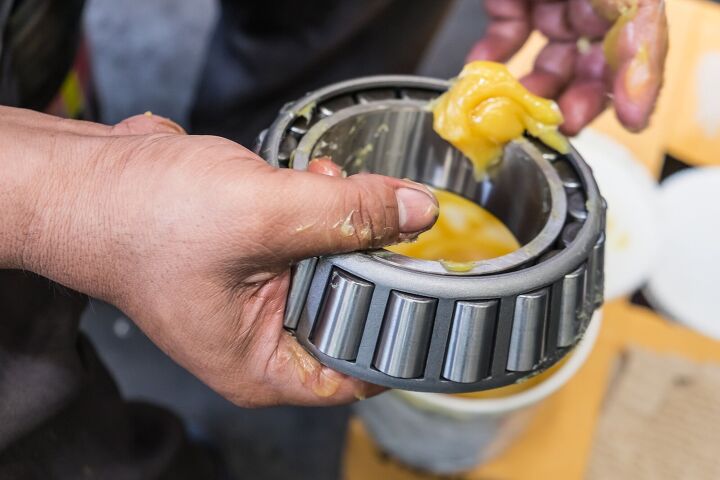
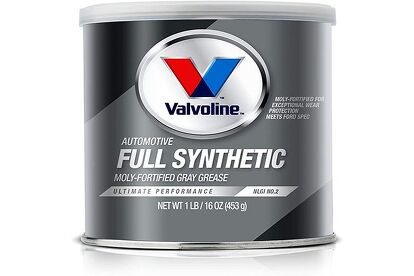



















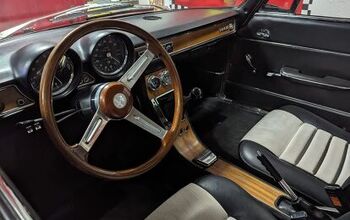





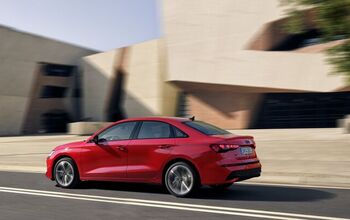
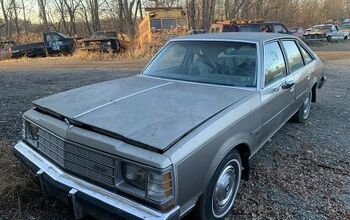

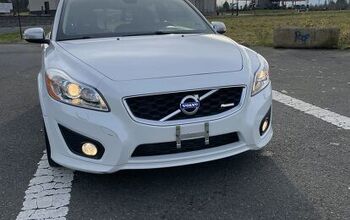



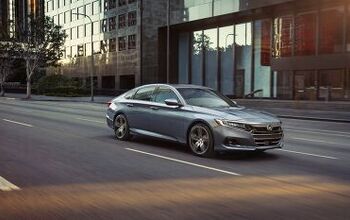
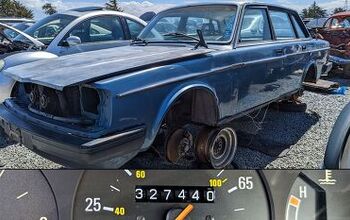

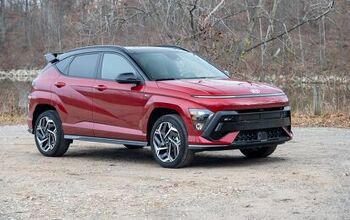

Comments
Join the conversation
The lithium based greases are not for wheel bearings . I find the synthetic greases tend to have the best heat resistance . The first picture shows the wrong way to pack a roller bearing maybe include a link to the proper method ? . it's not difficult, just a bit more time than slathering it on the outside of the bearing where it does little good . -Nate
Disclosure: I work with bearings, but in industry, not automotive. However, some grease lub rules are pretty universal, and therefore I’d like to leave some comments: NLGI certified – if you want to observe this verification, go with GC-LB only. The list of options at the NLGI website for greases that meet this requirement is long, there are a lot of options. How much? - When installing new TRB:s (taper roller bearings) for a wheel hub, I would generally say fill up the space inside actual bearings and between 1/3 and 1/2 of the space inside the “housing”. Make sure you also lubricate the seal and put grease right on the inside of the seal. Too much grease will make the bearings run warmer, which can be bad for both the grease itself and the seals. If service manual says different, then I am wrong and do as manual says. (Tractors, off-road mud-bath monsters, and such - just fill up all the space, eh? Keeping mud, dust and water out is prio 1.) Greased for life – As you know, most passenger car wheel bearings today are sealed as a unit and lubricated for life from the factory. Lubrication follow-up for those can only be two things – a) looking for seal damage (if you can see the seal leaking etc.) and b) sound => be ready to replace. When the temp starts going up, you’re in for a quick game over. Relubrication – so we are likely talking about TRBs here. Boat trailer bearings is one application where I can picture having a nipple on the cup to be able to relub with fresh grease after a dip. Just need to make sure the old grease can exit – a pressure build-up in the hub bearing space due to added grease can pop the seal. Otherwise, the running temperature of a bearing normally first go up after relubrication until the fresh grease finds it place, then the temp goes back to normal. Running sound of course should go down at relubrication. If you can have the wheel off the ground and spinning while relubricating that’s a plus. Grease price – as far as I checked, none for the greases mentioned here is expensive. Sure, the Timken High Temp seems to be over $ 20 /lb., but that’s still not much. True premium lubrication grease – and I am not saying normal wheel bearings need that – is over $ 200 /lb. in some cases. Mixing – Not all greases can be mixed, check for same thickener e.g. lithium and oil e.g. mineral. If not sure, ask. And avoid mixing if you can. Shelf life – Do not fool yourself by getting a big can and a lower $ per lb. Fresh grease of good basic quality is most often a better choice than the top premium stuff your dad got a good deal on per bucket in ’98. Even for private use – more than 5 years old? Ditch! Color – Some like black or grey, I’d go with red or blue. Easier to spot where you have fresh grease. The application – do not use e.g. wheel end grease on e.g. clutch release bearings, unless you have checked that’s ok - or feel ok with the risk level (so you’re about to sell the car?). Different bearing applications/locations really need different properties from the grease, there mostly are clear recommendations, and for anyone claiming there is one same solution to every use, well, I have some Bitcoins I just invented, would you like to invest? :D